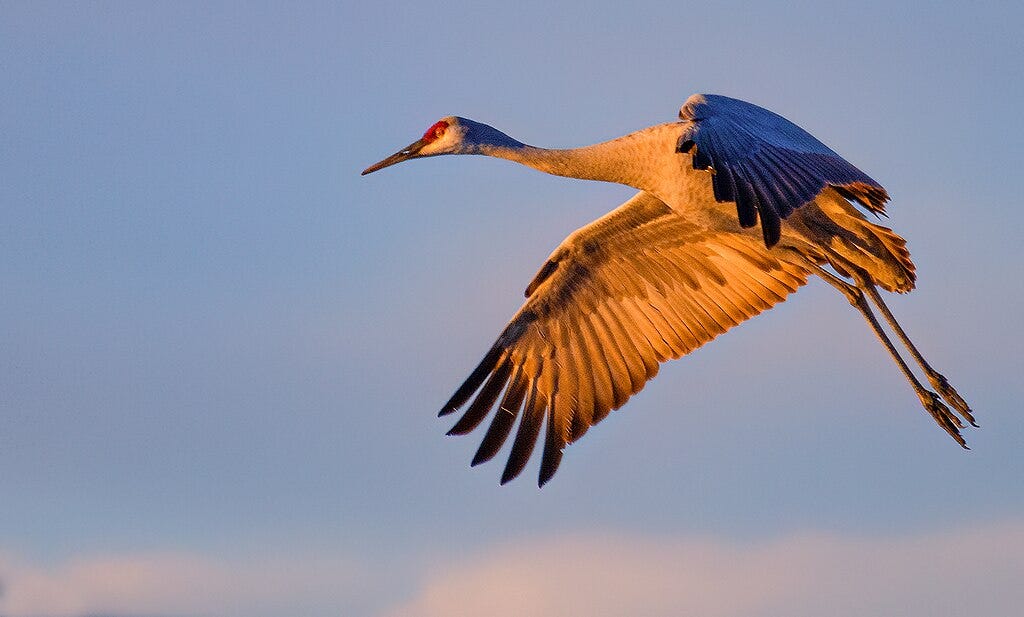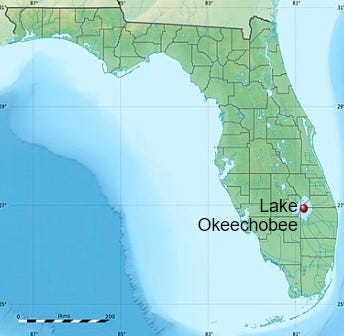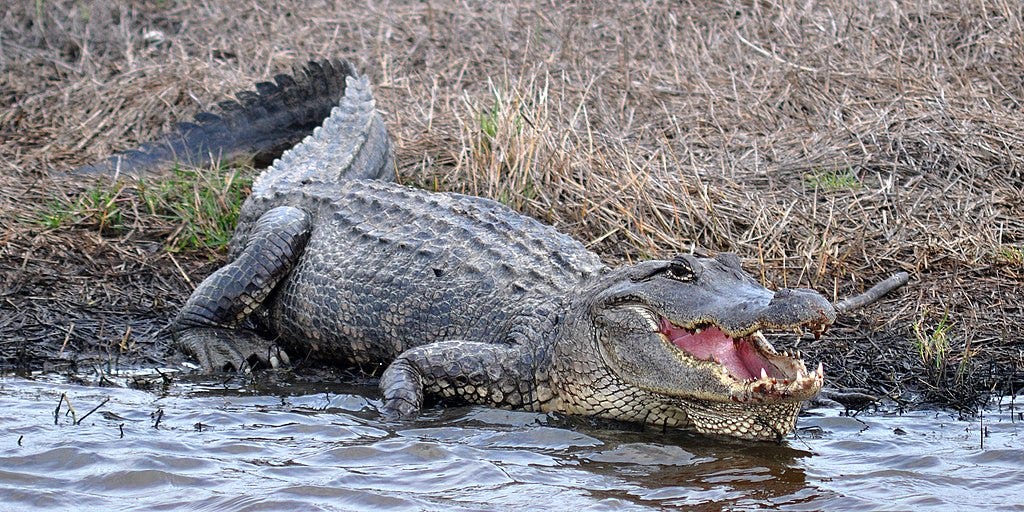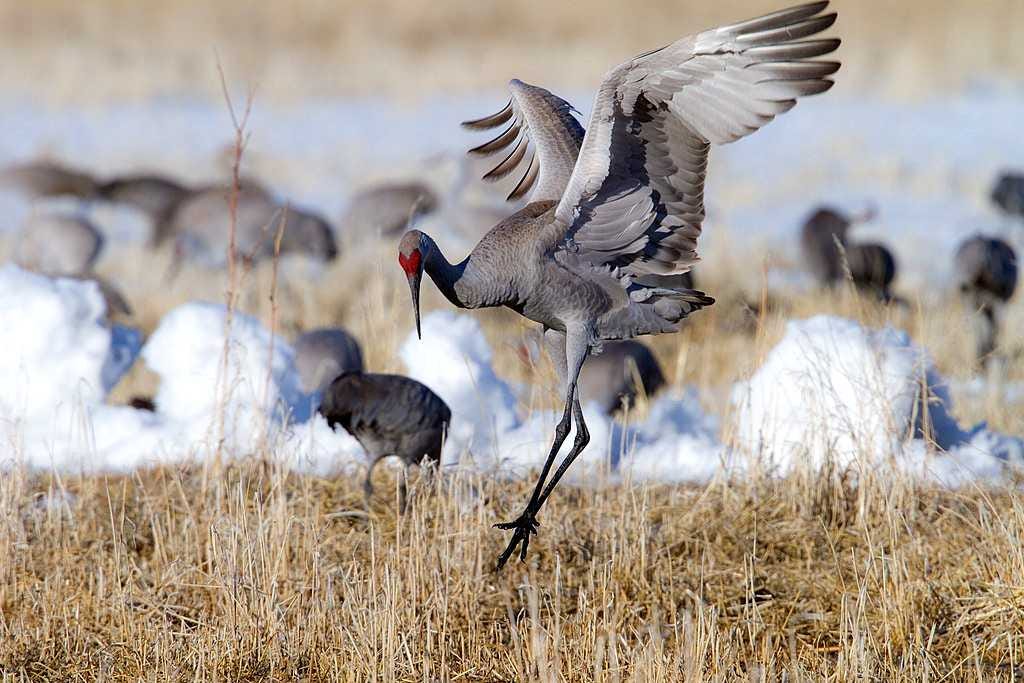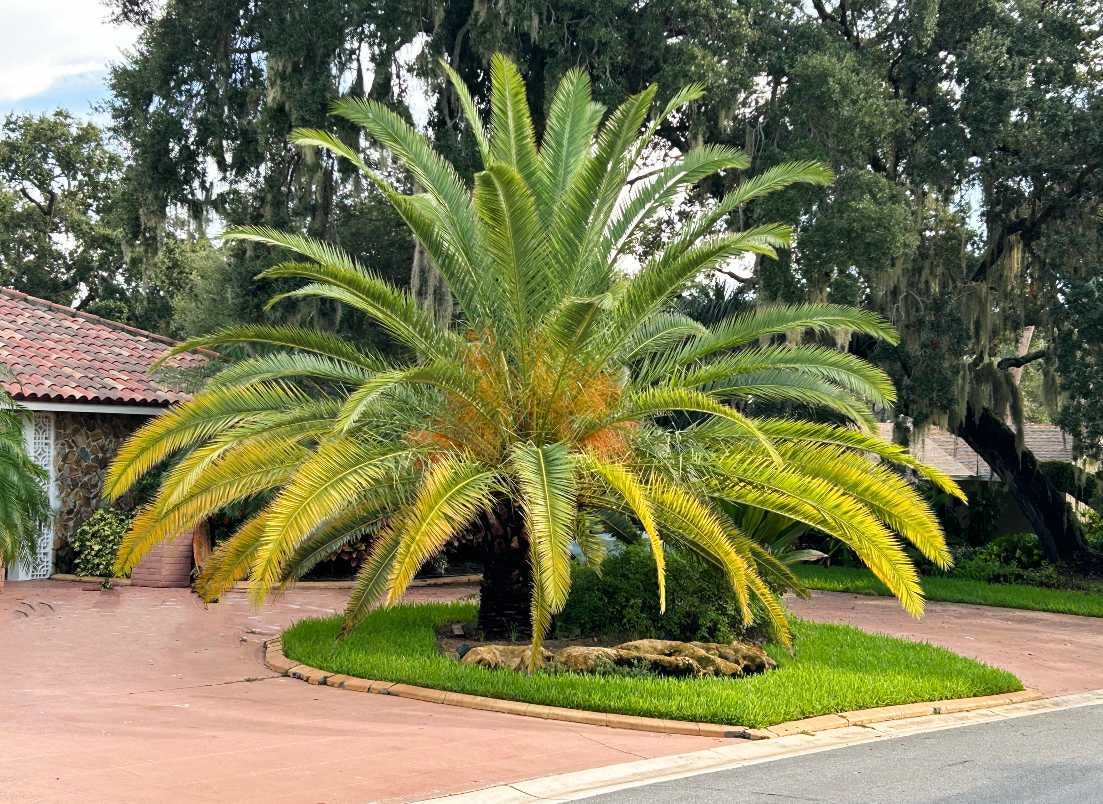Florida Flora and Fauna, Vol. 2
One thing everybody notes about Florida is that it is as flat as a pancake. I recently saw a map of what Florida may have looked like several million years ago, and even back then it was flat as a pancake.
I don’t know this for a fact, but the highest elevation in Florida is probably Space Mountain at Disney World.
Water, Water Everywhere
Anyway, the reality is that Florida = water, inside and out. First of all, it’s a peninsula, so it’s surrounded by water on three sides.
It also has a huge lake smack in the center of it’s southern half called Lake Okeechobee (Native American, meaning “big water” – which pretty much sums up its 730-square-mile girth.)
As if to confirm the state’s flatness, the giant lake averages only 9 feet in depth throughout.
Oh, and don’t forget that 1.5-million-acre swamp called the Florida Everglades that covers pretty much the entire bottom tip of the state. In the native Indian language it is called the Pai-ho-kee, which means “river of grass.” (The story of the Everglades is a whole article on its own.)
Alligators
Water, of course, breeds water animals, or should we say in this case ferocious water monsters?
If you can believe it, the Florida Fish and Wildlife Commission conducts an annual census of alligators in over 100 Florida bodies of water. Here’s the 2023 count: 1.3 million!
A friend of mine used to work for said Commission, and one day I asked him how in the world they count over a million alligators every year. He answered: Very carefully.
Uh, yes. As he described it, they actually go out in boats and do a rough head count in areas where the alligators congregate, but it’s only an estimate—which means there could actually be twice that number of monsters roaming the waterways of Florida!
(By the way, there are also approximately 1000 crocodiles in Florida too, if you were wondering.)
Fun Facts About Alligators
They only live in fresh water, so you’ll never find them in or near the ocean. Sharks are what you have to worry about there.
Males can grow up to 15 feet long and females up to 9 feet.
Their jaws exert 1000 pounds of pressure, so if you get bitten by one, you need to say an immediate Act of Contrition because your time’s up. Yet, their bite is not even their most potent weapon.
That would be their tails. First they hit you with their tail to get you on the ground, and then they pounce. Sneaky little critters.
The only thing thin-skinned about them is their ego, so don’t think you can taunt them and then just run away. Alligators can lift their bodies up on their stubby legs and run up to 30 mph for short spurts (in pursuit of those who insult them.)
Alligators are termed a keystone species because they are so critical to maintaining the ecosystem of Florida’s zillion miles of waterways and marshlands.
I’d like to say that alligators are benign creatures, but I’d be lying. They will eat you in a heartbeat and snack on your pet if you get too close to them. Fortunately, they don’t much like being around humans so, generally speaking, if you stay away from them, they’ll stay away from you.
In point of fact, there were only three recorded deaths by alligator in Florida in 2023, thankfully. To quote our beloved mainstream media, alligators are “mostly peaceful” predators.
So, the moral of the story is this: just don’t go near them and you’ll be fine.
Sandhill Cranes
My favorite bird in Florida, bar none, is the lovely Sandhill Crane whom you often see walking in pairs by the sides of roads and in wetlands. They mate for life and live up to 25 years in the wild.
The grey or greyish-brown adults stand about three feet tall, and the male has this wonderful thatch of red feathers on the top of his head which identifies him easily from the female. You can see them all over Florida, but they have a permanent habitat in Northeast Florida (around Jacksonville and north).
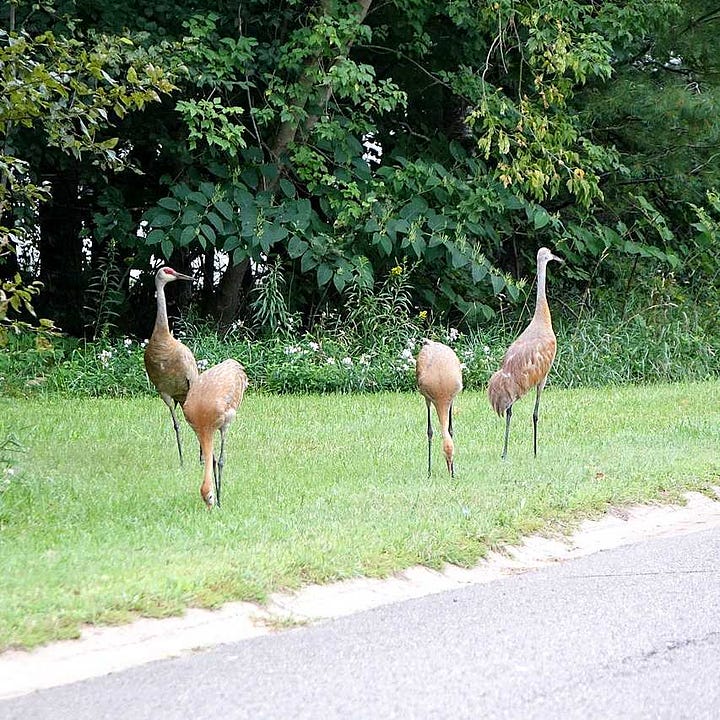
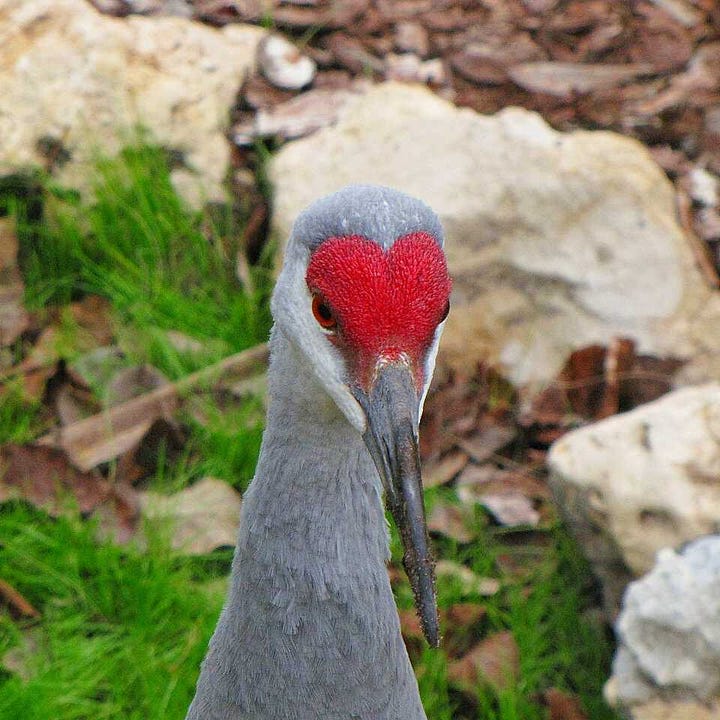
Like many humans, most of these cranes are snowbirds and ditch Florida for the summer. (And honestly I don’t blame them.)
Starting in the spring every year, a million of them migrate to the Platte River basin in Nebraska on their way further north. They say it’s a spectacular festival of bird beauty.
Sandhill Cranes are known for their distinctive honking call to their mates and for their ability to perform amazing ritual dances with wild wing-flapping and lots of jumping action (another reason I like them).
Canary Island Date Palm
When you visit any part of Florida, you’re likely to see a good number of the over 2000 species of palm trees that exist on earth. We live in palm tree paradise down here.
But the palm tree that stands out the most is the one that looks kind of like a firework that has been frozen mid-blast and then balanced on a low trunk just above ground level.
It’s called the Canary Island Date Palm, of the family of Phoenix Palms, and it grows in virtually all hot environments around the world, not only in Florida. (It’s just that Florida’s Phoenix Palms are better than any others. You can take it from me. I did a study.)
The Canary Island Date Palm, however, is absolutely stunning. When you get an eyeful of this one growing in a nearby neighborhood, I’m sure you’ll agree. Look at this beauty.
As I said, it’s like a frozen starburst firework.
They’re festive and pleasant to look at, and they’re all over the place, which may be a few of the reasons why everyone wants to move to Florida.
(That little matter of not having to pay state income tax is probably a close second.)
A Feather in the Cap
I have to add two more points in Florida’s favor before I conclude:
Jupiter (the city in Florida, not the planet) has been rated by USA Today as the “Best Dog Beach in the United States.” Not to be outdone, the city just north of Jupiter, Stuart, has been named by Travel & Leisure Magazine as “The Best Small Retirement Town” in America.
The Sandhill Cranes would probably say these towns are a real “feather” in the Sunshine State’s cap.
NOTE to dog owners and retirees: these great cities are situated on the (salty) Atlantic Ocean side of Florida, so you’re probably not going meet Gatorzilla there. You and Fido should be quite safe. Whew.
—
Photo Credits: Feature Picture: Sandhill Crane Flying (Great Sand Dunes National Park and Preserve); Map of Florida via Wikipedia; Alligator (Wilafa); Sandhilll Crane Dance (Stepan Mazurov); Sandhill Crane Red Head (Riverbanks Outdoor Store); Sandhill Crane Family (NPS, Public Domain); Canary Island Date Palm (Peter Darcy).





